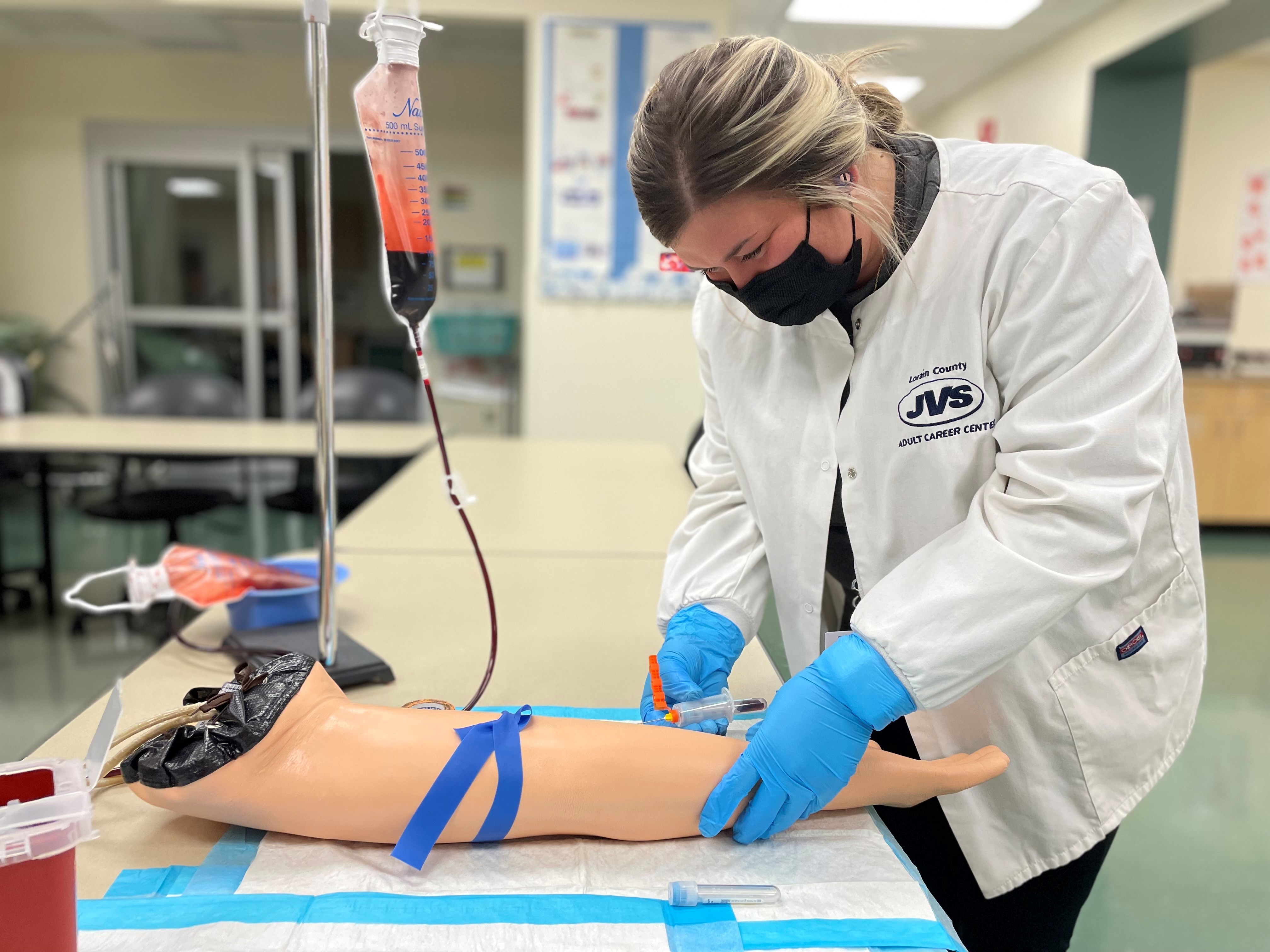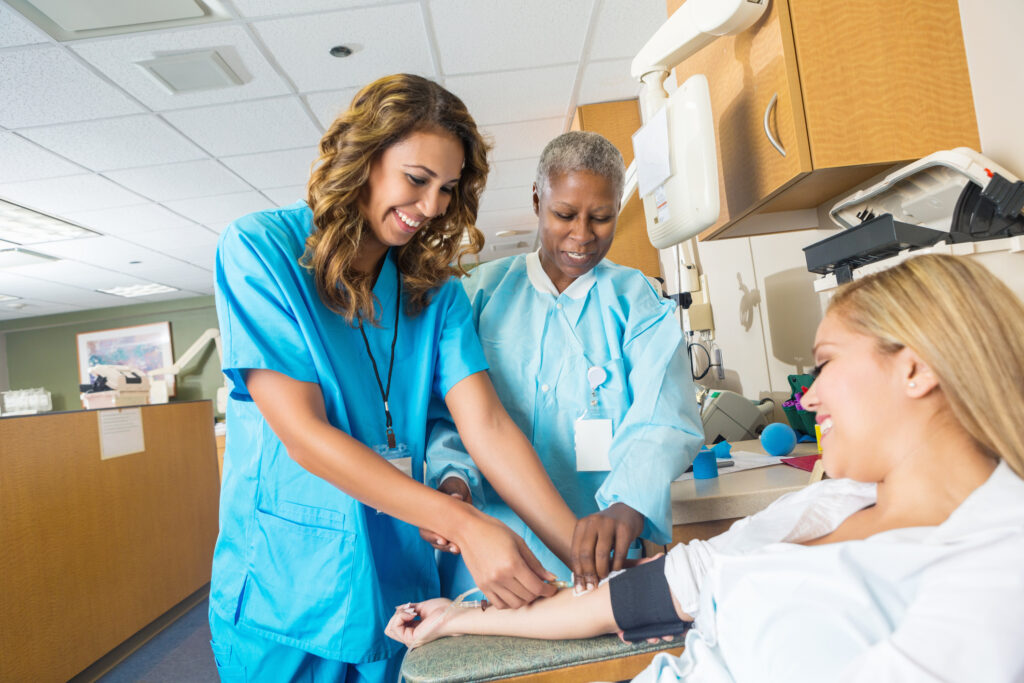The 45-Second Trick For Northeast Medical Institute - New Haven Campus Phlebotomy Course & Cna Class
The 45-Second Trick For Northeast Medical Institute - New Haven Campus Phlebotomy Course & Cna Class
Blog Article
Getting The Northeast Medical Institute - New Haven Campus Phlebotomy Course & Cna Class To Work
Table of ContentsSome Known Factual Statements About Northeast Medical Institute - New Haven Campus Phlebotomy Course & Cna Class The Only Guide to Northeast Medical Institute - New Haven Campus Phlebotomy Course & Cna ClassThe 9-Second Trick For Northeast Medical Institute - New Haven Campus Phlebotomy Course & Cna Class3 Simple Techniques For Northeast Medical Institute - New Haven Campus Phlebotomy Course & Cna ClassThe Greatest Guide To Northeast Medical Institute - New Haven Campus Phlebotomy Course & Cna ClassThe 7-Second Trick For Northeast Medical Institute - New Haven Campus Phlebotomy Course & Cna Class
The use of such gadgets must be come with by various other infection avoidance and control methods, and training in their usage.For settings with low resources, expense is a driving aspect in purchase of safety-engineered tools. Where safety-engineered devices are not offered, experienced use of a needle and syringe is appropriate.
Among the crucial markers of high quality of care in phlebotomy is the participation and cooperation of the patient; this is equally beneficial to both the health and wellness worker and the patient. Clear details either written or verbal should be readily available to each client that goes through phlebotomy. Annex F supplies sample message for discussing the blood-sampling procedure to a patient. labelling); transport conditions; interpretation of outcomes for scientific administration. In an outpatient division or center, provide a specialized phlebotomy cubicle containing: a clean surface with two chairs (one for the phlebotomist and the various other for the person); a hand wash container with soap, running water and paper towels; alcohol hand rub. In the blood-sampling room for an outpatient division or facility, supply a comfortable reclining sofa with an arm rest.
All about Northeast Medical Institute - New Haven Campus Phlebotomy Course & Cna Class
Ensure that the signs for blood sampling are plainly specified, either in a composed protocol or in recorded instructions (e.g. in a laboratory kind). Gather all the equipment required for the treatment and place it within risk-free and very easy reach on a tray or trolley, guaranteeing that all the items are clearly noticeable.
Where the patient is grown-up and aware, comply with the actions outlined below. Present on your own to the client, and ask the individual to state their full name. Check that the laboratory form matches the client's identity (i.e. match the person's information with the research laboratory kind, to ensure precise identification). Ask whether the patent has allergic reactions, anxieties or has ever fainted during previous shots or blood draws.
Make the person comfortable in a supine placement (if possible). The client has a right to decline an examination at any time before the blood sampling, so it is important to make sure that the client has actually comprehended the treatment - CNA Classes.
More About Northeast Medical Institute - New Haven Campus Phlebotomy Course & Cna Class
Prolong the client's arm and check the antecubital fossa or forearm. Locate a vein of an excellent dimension that is noticeable, straight and clear. The diagram in Section 2.3, reveals common positions of the vessels, but several variants are feasible. The median cubital blood vessel exists in between muscular tissues and is generally one of the most simple to puncture.
DO NOT place the needle where blood vessels are drawing away, due to the fact that this enhances the chance of a haematoma. The blood vessel must be noticeable without applying the tourniquet. Situating the vein will aid in identifying the correct size of needle. Use the tourniquet regarding 45 finger sizes above the venepuncture website and re-examine the blood vessel.
Samplings from central lines bring a risk of contamination or erroneous research laboratory test results. It is appropriate, but not ideal, to draw blood samplings when initial presenting an in-dwelling venous gadget, prior to linking the cannula to the intravenous liquids.
Not known Facts About Northeast Medical Institute - New Haven Campus Phlebotomy Course & Cna Class
Failing to permit enough contact time increases the threat of contamination. DO NOT touch the cleaned site; in specific, DO NOT place a finger over the vein to lead the shaft of the revealed needle.
Ask the client to form a clenched fist so the blood vessels are extra noticeable. Get in the blood vessel promptly at a 30 level angle or much less, and proceed to present the needle along the blood vessel at the simplest angle of entrance - CNA Classes. When adequate blood has been collected, launch the tourniquet BEFORE taking out the needle
Little Known Questions About Northeast Medical Institute - New Haven Campus Phlebotomy Course & Cna Class.
Take out the needle gently and use mild pressure to the website with a clean gauze or dry cotton-wool round. Ask the individual to hold the gauze or cotton woollen in position, with the arm expanded and increased. Ask the patient NOT to flex the arm, because doing so triggers a haematoma.

The Best Guide To Northeast Medical Institute - New Haven Campus Phlebotomy Course & Cna Class
Do not push the syringe plunger because extra pressure increases the danger of haemolysis. Where feasible, keep the tubes in a shelf and move the rack in the direction of you. Infuse downwards right into the suitable coloured stopper. DO NOT get rid of the stopper resource because it will launch the vacuum. If the example tube does not have a rubber stopper, inject very slowly into the tube as minimizing the pressure and speed made use of to move the specimen decreases the danger of haemolysis.

Report this page